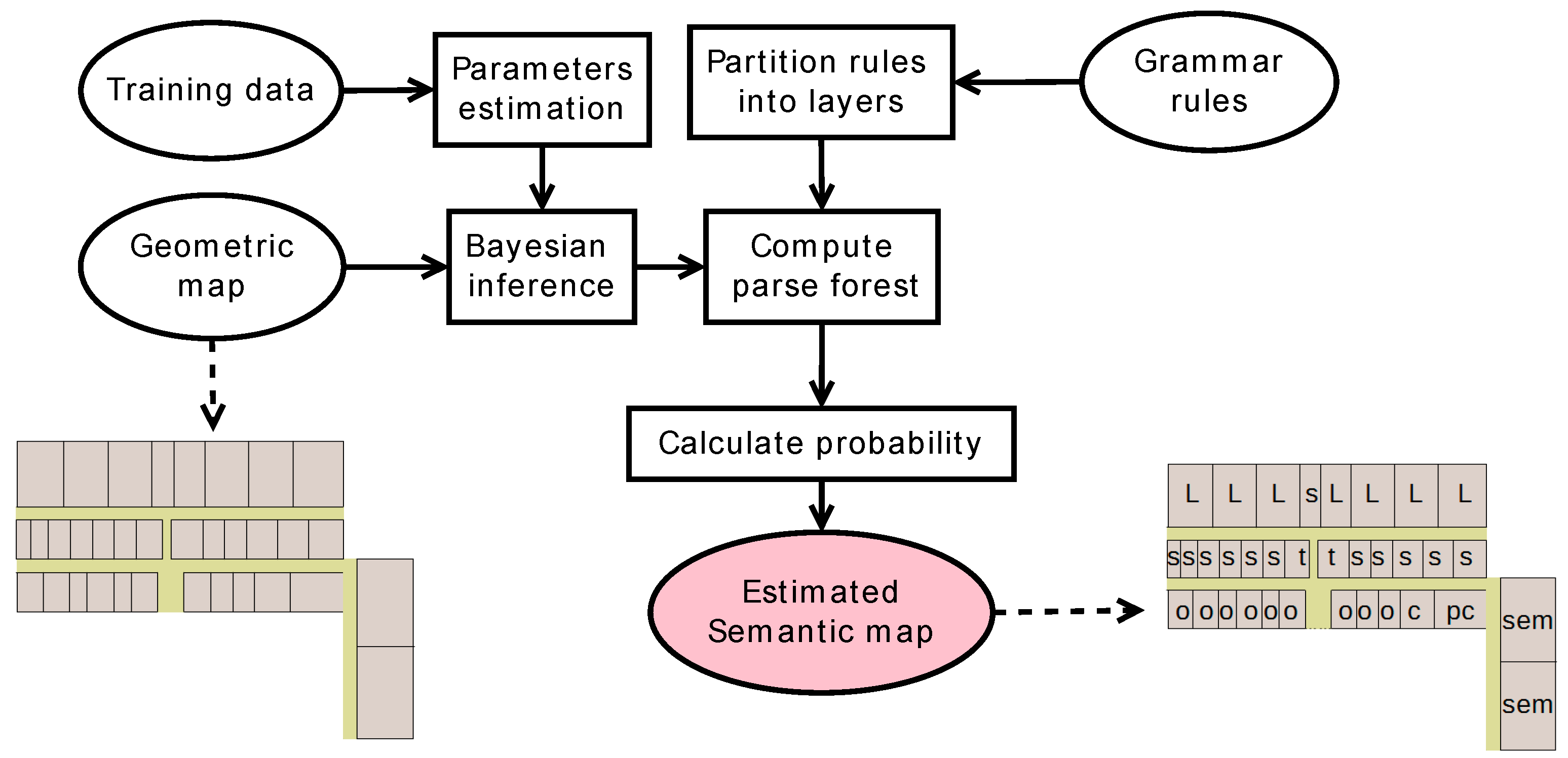Current indoor mapping approaches can detect accurate geometric information but are incapable of detecting the room type or dismiss this issue. A recently published paper investigates the feasibility of inferring the room type by using grammars based on geometric maps. Specifically, we take the research buildings at universities as examples and create a constrained attribute grammar to represent the spatial distribution characteristics of different room types as well as the topological relations among them. Based on the grammar, we propose a bottom-up approach to construct a parse forest and to infer the room type. During this process, Bayesian inference method is used to calculate the initial probability of belonging an enclosed room to a certain type given its geometric properties (e.g., area, length, and width) that are extracted from the geometric map. The approach was tested on 15 maps with 408 rooms. In 84% of cases, room types were defined correctly. It, to a certain degree, shows that grammars can benefit semantic enrichment (in particular, room type tagging). Details of the study can be read in the open access full article.
Hu X, Fan H, Noskov A, Zipf A, Wang Z, Shang J.: Feasibility of Using Grammars to Infer Room Semantics. Remote Sensing. 2019; 11(13):1535.



